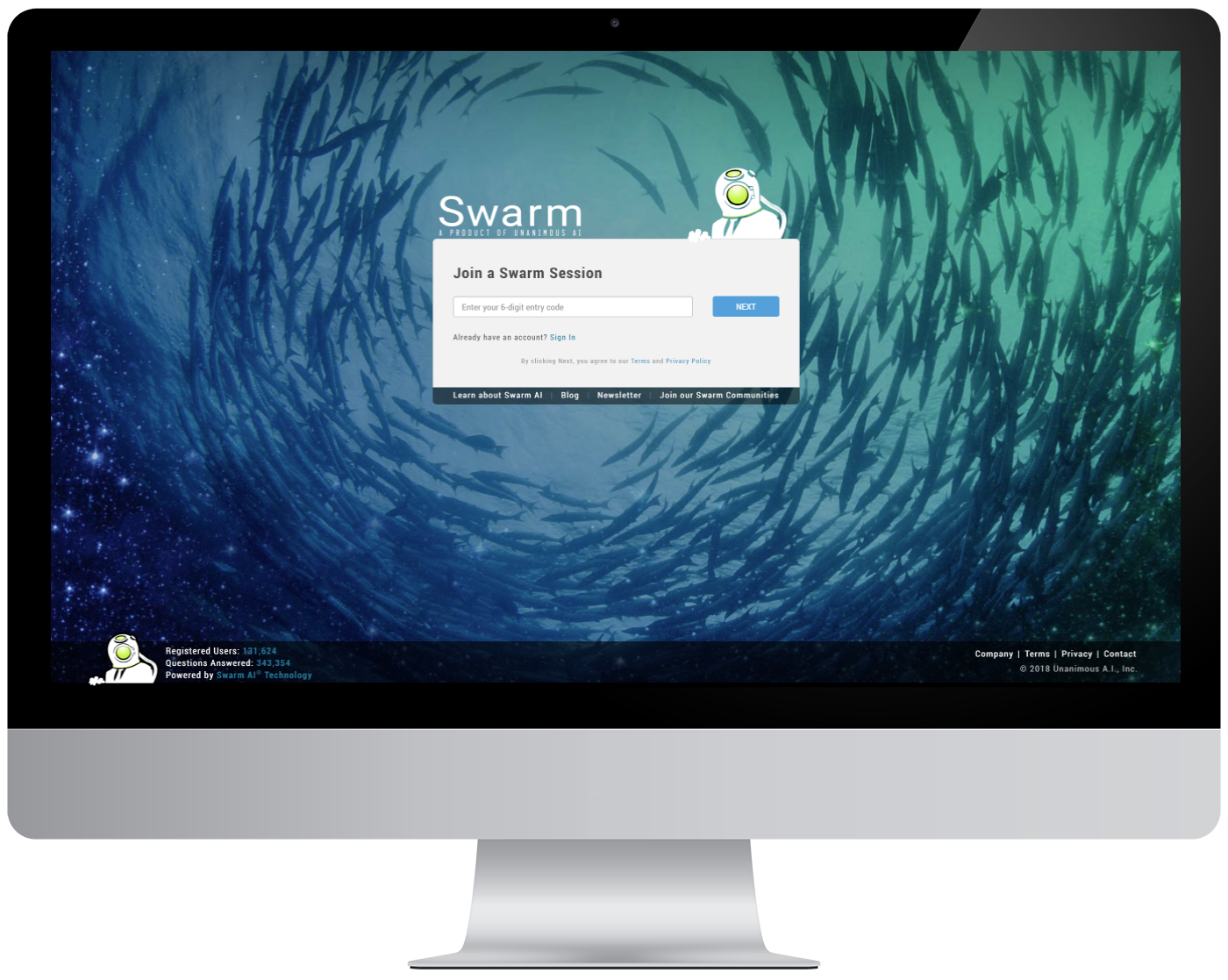What is Swarm AI technology?
It all goes back to the birds and the bees. Fish too. Even ants. It goes to the great many organisms that amplify their group intelligence by forming flocks, schools, shoals, colonies, and swarms. Across countless species, nature show us that social creatures, when working together as unified systems, can outperform the vast majority of individual members when solving problems and making decisions. Scientists call this “Swarm Intelligence” and it proves the old adage – many minds are better than one.
What about us humans? We didn’t evolve the natural ability to form a Swarm Intelligence, for we lack the subtle connections that other species use to establish tight feedback-loops among members. Fish detect tremors in the water around them. Bees use high speed vibrations. Birds detect motions propagating through the flock. But now, with high-speed networking technology, we humans can connect with each other from anywhere in world. We just need the right technology to turn those connections into real-time systems with closed-loop feedback among members.
That’s where Swarm AI® technology comes in. It provides the interfaces and AI algorithms to enable “human swarms” to converge online, combining the knowledge, wisdom, insights, and intuitions of diverse groups into a single emergent intelligence. From predicting sports and financial trends, to assessing the effectiveness of advertisements and movie trailers, real-time swarms have been shown to significantly amplify intelligence. This video clip from TED gives a quick introduction:
But what about the technology? Unanimous AI has developed a patented architecture that enables groups of people, from locations all around the world, to log into our Swarm® platform and participate as part of a real-time closed-loop intelligence moderated by AI algorithms. The system, powered by cloud servers within Amazon Web Services and which includes web-based clients for desktop and mobile users, along with back-end processing using neural-networks, is described in a quick four minute video below:
Swarm AI has been validated by dozens of academic papers. In one recent study by researchers at Unanimous AI and Oxford University, a Swarm AI system was used to predict 50 soccer games in the English Premier League. Results showed that the individuals, who averaged 55% accuracy when working alone (not much better than had they performed coin-flips) were able to amplify their predictive accuracy to 72% by predicting together in swarms. This corresponds to 131% amplification in predictive accuracy. Such amplification has been shown across a wide range of academic studies, addressing diverse applications ranging from amplified accuracy in financial forecasts (Oxford University) to increased diagnostic precision in medicine (Stanford University) to optimized decision-making in business teams (California Polytechnic). See our research studies here.
Why does “swarming” outperform votes, polls and surveys? This is a common question, as traditional methods for aggregating human input have been around for hundreds of years. Swarming may seem new, but it was inspired by natural processes that have been around for millions of years. The most important thing to know about swarming is that it treats participants as active members of an interactive control system, with feedback loops that enable the group to explore a set of options and converge on solutions that maximize their collective conviction. This is very different than polling, which treats each person as a passive source of data for statistical aggregation. The following video reviews these differences using a very simple example – deciding where to go to lunch. Is there a better way than taking a vote? It turns out, there is:
Swarm Platform
Swarm, the world’s first Enterprise Collaboration Platform that amplifies the intelligence of business teams, enabling optimized decisions, forecasts, estimations, and prioritization. Available by low-cost monthly subscription as a web-based SaaS product, Swarm combines the power of human insights with AI algorithms, enabling networked teams to quickly amplify their collective intelligence while collaborating in real-time. For more information, visit our Swarm product page.

